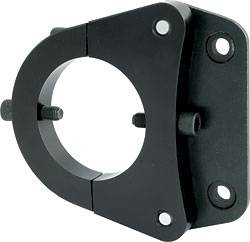Bout damn time someone has a nice neat up to date thread on this old subject, thanks for posting it. Some of those old S-10 forums threads are an absolute dragged out mess.
I got a set of calipers & lines years ago, drilled some brackets with extra lightening holes in them{ to look cool also}, and never got around to the project. I think I can both cut and turn down the stock rotor/ hub in place or on another spindle with a good 4 1/2" grinder & years of skill using them. Installing studs before turning down hub was an option some did to help prevent cracking I may consider.
Don't remember noticing having to modify G-body steel line before. So you just cut off factory flared end and did newer style flare with flare tool, leaving g-body connector in place behind flare?? Line flaring is one of my weaker skill areas and I need to either buy or rent a tool. Maybe Oreilly's, Autozone or Advance Auto may have a worth while tool to rent or buy? Don't feel like spending $200 plus on some of the professional models.
Now, one change I'm planning on making when I do finally get around to mine::: larger rotors. I have 18's so I could get either stock or aftermarket 14" z-06 vette rotors for not too much more money from Rock Auto.. Not sure if the in & out disc to rotor mount spacing is any different, but I think all I'd have to do is move caliper bracket holes out an inch. OR, 1/2" for some 13" c-5/6 rotors.
A sidenote of interest here, A friend recently told me our local Oreilly's store would now price match rock auto.
Yes, I used a tube cutter to cut off the G body double flare and used a lisle bubble flare tool to reflare the line 1/4" back from where the stock double flare was. I have heard the lisle or rigid tool is good. Harbor fright and other cheap ones aren't forged of good enough material and bend which is where most problems lie. Getting good bubble flares is hard and I struggled for years but finally found out how. I suggest getting some old GM line (the new stuff just seems softer) and giving it a shot before you do it on the car. I found tightening the clamp really tightly (finding one with good hard knurling is important too so the line doesn't push in when you tighten the form tool) and deburring the inside of the line really well before flaring helps a lot. Also, getting the height of the tube extending out of the clamp is critical.
81cutlass: I don't mean to bother but on the brackets does it have to be 5/16" I found a piece of 1/4 will that work with maybe a washer with it?
I used 3/8. 5/16 would work with a washer I am sure but my local menards had 3/8. 3/8 is such an easy size to find and then you don't have to worry about washers. I'm sure it would work with the right washers but why bother when 3/8 is a common stock size. 1/4 is too thin in my opinion, there is a lot of force in the system.


